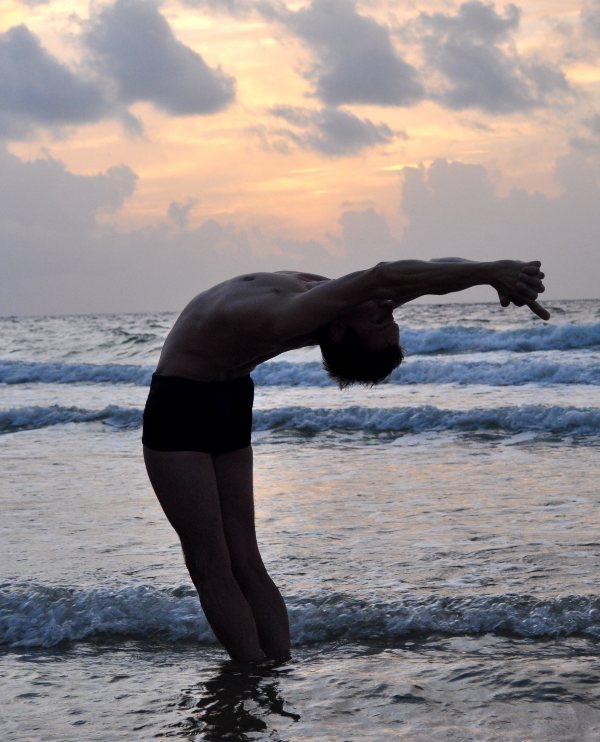
Jody Zimmerman in Standing Backbend, Ft. Lauderdale, FL, July, 2010
I’ve practice yoga almost daily for fifteen years, and I have been a yoga instructor for four years. Of all the asanas I practice and teach, I have observed that backbends, particularly the standing backbend, generate the most anxiety, fear, and reluctance among yogis.
Backbends are one of the most mysterious of all the asanas, but just like a great mystery novel, as you progress page by page, slowly revealing the layers of the story, as you approach your backbends step by step, you unlock their enormous power.
Anxiety, fear, and reluctance are terms not normally associated with the benefits of the practice of yoga. Don’t we all practice yoga to rid ourselves of these states of being? The answer is yes and no.
The practice of hatha yoga or forceful yoga employs the body, mind, and breath control to help an individual arrive at a physical, mental, and spiritual state of overall calmness in order to meditate and connect with the universe—that which is everything.
So, what does this have to do with backbends? For most of us, particularly Westerners, we spend our working lives hunched over computers, bent over executing physical tasks, bowing toward omnipresent gravity. In this hunched over state, we are, both symbolically and physically, protecting our vital organs and our hearts. We are covering and concealing and relinquishing to gravity.
Backbends are the polar opposite of this. In backbends, we are uncovering and exposing our vital organs and our hearts. We are lifting our heart toward the heavens, away from the pull of gravity. We are opening our spines in opposition to our normal state, we are exposing ourselves, and we are displaying our vulnerability. These are all fearful, sometimes terrifying states for many of us.
The key to practicing backbends without anxiety, fear, and reluctance is to start within your comfortable range, and each time you come to your mat, take it one tiny step further.
Most of us do backbends each morning without even thinking about it. At some point we stretch our spines upward, open our arms wide, reaching up, lifting our chests, perhaps with a yawn—performing an unconscious hatha yoga movement to wake up our bodies after sleep.
Locus pose and Bridge pose are the easiest back bends for most of us, because we are firmly supported on the ground. Camel and particularly Standing Backbend present more challenges because our bodies are more vertical and further away from the mat.
Backbends often generate a great deal of emotional release as you open your Heart Chakra. Immediately after the death of three of my beloved dogs at different times in the past, I would go straight to yoga practice, and invariably, each time I arrived in Camel Pose, I became overcome with emotion and literally cried my heart out, helping me to both grieve the loss of my loved ones and to arrive at an understanding that they weren’t really dead or gone, but merely moving on to become a part of the universe in a different way.
And so goes the mystery and power of backbends.

Jamie Haworth, Jody Zimmerman, Shawna Spellman, and Rob Spellman from Heat Yoga and Wellness in Camel Pose at Pura Vida Yoga Resort in Costa Rica in February 2007.